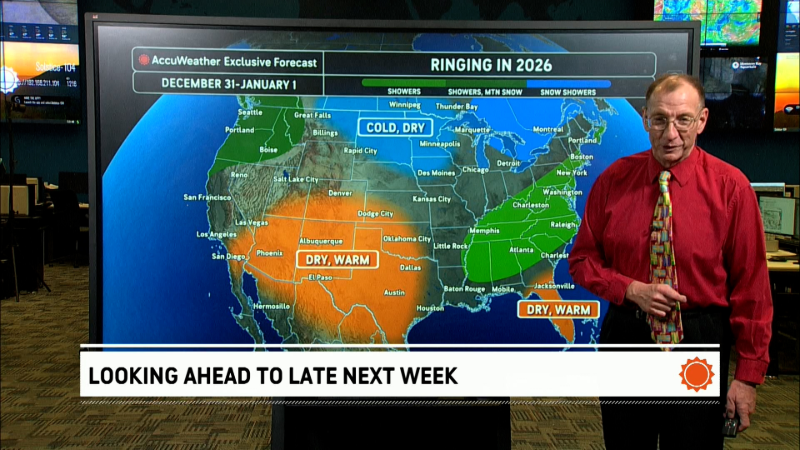What is a snow squall?
What's the difference between a squall, blizzard and snowstorm?
A multivehicle accident during a snow squall on I-90 in Erie County, Pennsylvania, caused traffic to back up for miles.
A snow squall is a brief period of intense snowfall and wind that leads to whiteout conditions which could trigger dangerous traffic accidents. Snow squalls are most common in the northern United States — especially around the Great Lakes — between November and March.
"Snow squalls are the winter equivalent of summertime torrential showers and thunderstorms," AccuWeather Senior Meteorologist Alex Sosnowski said. "The most intense squalls, triggered by a rapidly cooling upper atmosphere, can have strong wind gusts, thunder and even lightning."
Snow squalls are infamous for causing abrupt and drastic reductions in visibility. Drivers can be traveling on clear, dry roads with no sign of trouble, only to find themselves moments later grappling with near-zero visibility and treacherous, snow-covered surfaces. The pressure to drive fast on major highways in heavy traffic can add to the risk of deadly accidents, sometimes initiated by sudden braking as visibility plunges, like this one on Interstate 81 in Pennsylvania in March of 2022.
Mike Moye had just gotten off the road when he started capturing video of vehicles slamming into one another after a snow squall brought visibility to almost zero on March 28.
Snow squalls are usually extremely intense and short-lived - lasting less than 60 minutes - and can retain that intensity during the entire duration of a localized event. In contrast, a snowstorm could last for several hours or even days and typically impacts a much broader geographic region.
A snow squall is similar to a blizzard but is localized in time or in location, and snow accumulations may or may not be significant.
This time-lapse video from Warrens, Wisconsin, shows how quickly driving conditions on Interstate 94 turned dangerous as soon as heavy snow showers came rolling in the area on Dec. 4.
Each year, over 1,300 people are killed and more than 116,800 people are injured in vehicle crashes on snowy, slushy or icy pavement, according to the Department of Transportation. Motorists should avoid distractions while driving, be well aware of rapidly changing weather conditions and keep abreast of snow squall warnings.

(Photo credit: Getty Images)
In some cases, taking secondary roads where speed limits are lower or avoiding travel during snow squall situations may be better options.
Delay travel: If at all possible, delay your drive. There is no safe place on the road during a snow squall. If you must drive, monitor the latest forecasts by downloading the free AccuWeather app.
Enable wireless emergency alerts on your mobile phone: These alerts will trigger your phone to vibrate and emit a sound (if the sound is turned on) when the National Weather Service issues a significant snow squall warning. Upon receiving an alert, safely exit the roadway at the earliest opportunity and wait for 30-60 minutes or until the warning is no longer in effect.
Drive defensively: Use defensive driving strategies to ensure you can reach a safe spot to exit the road. Turn on your headlights and hazard lights, and increase the distance between your vehicle and the one in front of you. If you begin to lose control, gently pump your brakes and steer through any skidding. Avoid harshly braking or making sudden turns of the wheel, as these actions can lead to a greater loss of control and possibly result in an accident.
Remain calm: If you encounter an accident, slow down gently. Drive past the accident if you can. If you can't safely pass, do not get out and stand near your vehicle. If you can safely get far away from the road and accident, you should do so but never get out of your car. Remain seated and keep your seatbelt on until help arrives.
Report a Typo














